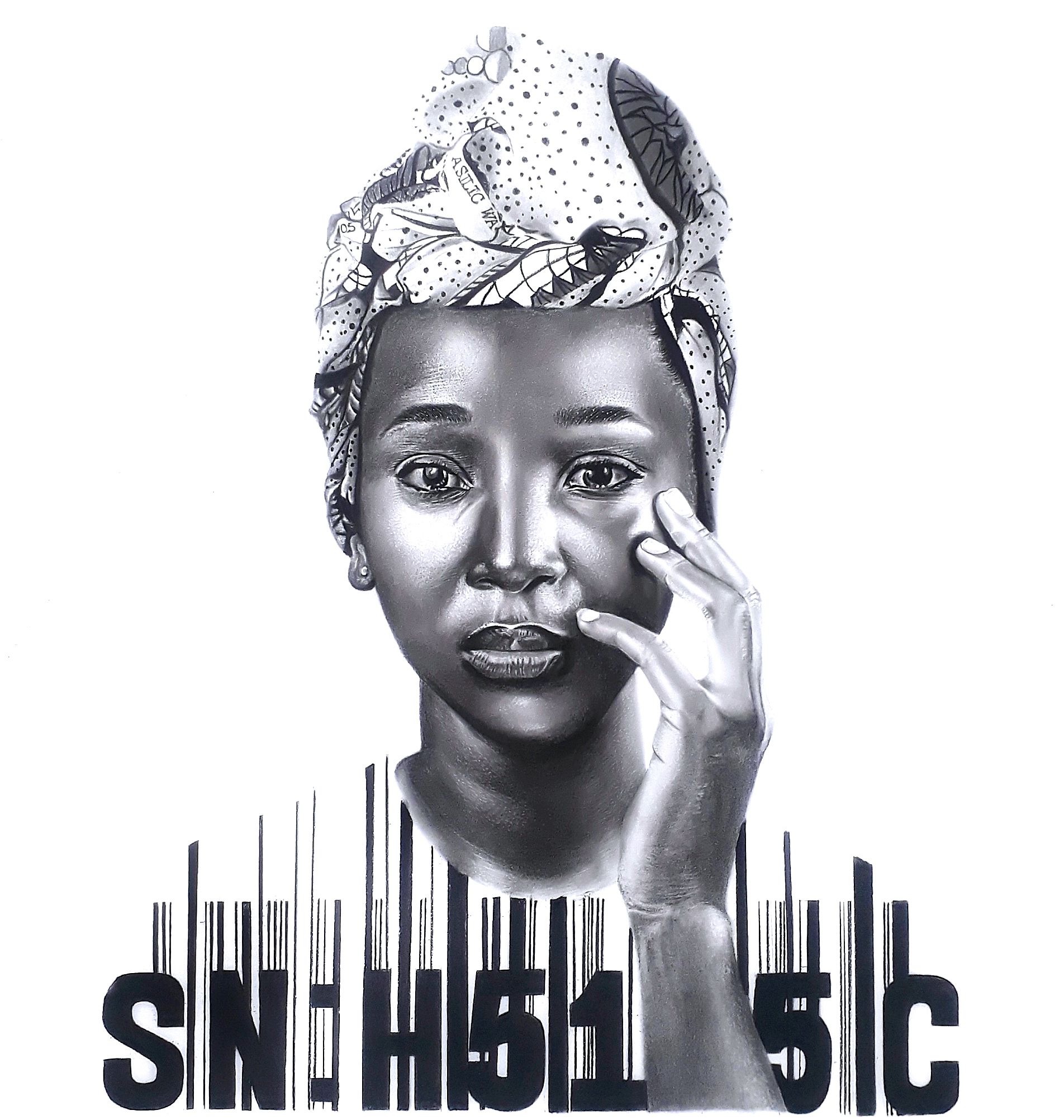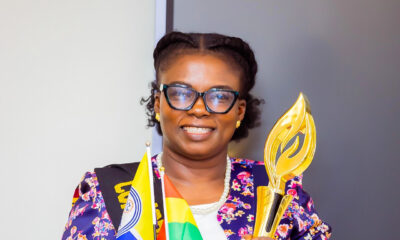News
More African Artists are Getting on Board, Exploring & Embracing Hyperrealism

From a distance, the image looks like a classic black and white photograph, but closer scrutiny reveals a fine piece of art. It is a pencil-drawn portrait.
To capture details — the face’s curves and contours, for example, the skin pores; eyebrows; eyelids; spotless white teeth; and general facial expression — and to express them in this fashion, clearly took the artist many long hours of sitting and drawing, all the while paying close attention to detail with a single-minded focus.
This is the world of hyper-realism, a technique that consists of achieving a quasi-perfect illusion of a photograph through drawing, mainly with a pencil or charcoal. Unlike oil paint or acrylic, pencil—either graphite, charcoal, coloured, or pastel—is a dry medium, which gives the artist greater flexibility.
The genre already has its African masters and rising stars. Among them are Nigerians Ayo Filade, Babajide Olatunji, and Ifeyinwa Joy Chiamonwu.

The trend has taken off on social media, and now, more artists are getting on board, exploring and embracing the genre.
“To make a hyper-realistic portrait is not easy; it requires a lot of patience, and some models are more complex than others. Anyway, the most difficult part is the beginning. But once I have understood the subject, it becomes easier,” said Jelani Gueye, a Senegalese who has fallen in love with the pencil.
The 35-year-old artist said though it appeared challenging, he was attracted to the art form by “my obsession with detail in my work.”
“My introduction to hyper realism dates from 2017,” he added from his studio in Dakar. Gueye was putting the final touches to a piece he had been working on for weeks, he said.
While his love for visual representations dates back to his early youth, it was as a teenager that he decided to specialise.
“It’s at the age of 15 that I fully dedicated myself to the portrait, which I always realised with graphite pencil,” he explained.
After high school, he joined the Dakar National School of Arts, where he honed his technique. It’s only recently that he has leapt to hyper-realism.
“Hyperrealism is challenging because I have to be patient to not only observe but remember and render their details in the portrait,” said Gueye.

“More and more I try to capture the emotions of my subjects to create a work full of life. The realisation of my works most often goes through the following steps: the sketch, the shadows and lights and finally the finishing by putting the accent on the details. It is a kind of puzzle that I do. A Meticulous construction is necessary to create a realistic work full of life.”
Adebisi Akeem, also known as Adebisi Olami, is a self-taught and talented 27-year-old Nigerian portrait artist who lives in Ibadan. His powerful hyperrealist drawings are also getting a lot of attention.
“I do conceptual hyperrealism using a charcoal pencil. I look for a story and I create a concept around it using human models, objects, shapes, figures, and numbers to explain important situations in general,” he said.
A linguistics and communications graduate, Olami says the decision to put down his pen and pick up a pencil only came in his 20s, after he attended an art exhibition.
He recalled a group of artists staging a small art exhibition at his university in 2016. Then and there, he said, he fell in love with the genre.
“I was curious to know how they managed to create beautiful portraits, and because I was too keen to learn the skill, I started watching and learning the art on YouTube,” he said.
“It was difficult at first, but it became a part of me faster than I expected, and I’ve been doing it with everything I’ve got ever since.”

Olami is now an established portraitist with people regularly commissioning his art. Just like Gueye and Olami, other African portraitists rely heavily on social media platforms—especially Twitter and Instagram—to reach and extend their audience.
“People usually commission me for celebrations like birthdays or weddings, to immortalise their family, ” said Adebisi, whose works have already travelled across the ocean to reach clients in the USA and the UK.
“Definitely, it is the level of realism in the portrait that attracts clients, and there is an important demand for portraits,” Gueye said.
This is precisely what Esther Adebayo, one of Adebisi’s clients, was looking for when she contacted him.

“It was a pencil drawing, but it looked like a real-life picture,” she recalled the first time she saw one of the portraits. She immediately commissioned a portrait, she recalled.
For Olami, drawing hyperrealistic portraits is both a way of connecting with people and exploring deeper into his own creativity.
“It is a style of art with a very complex process, so it allows me to set challenges for myself and put my mind to it,” he said.

Photo Credit: Jelani Gueye
Story by Patrick Nelle for bird story agency























